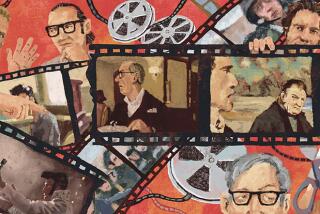Von Stroheim’s ‘Greed’ Can Still Rivet
- Share via
Director Erich von Stroheim hated the front office men who ran Hollywood in the ‘20s, especially the young Irving Thalberg who chased him out of Universal Studios by locking him out of the editing room and cutting “Foolish Wives” from 34 reels to 10. Von Stroheim left to join Samuel Goldwyn’s company, run by the sympathetic June Mathis.
He joined Goldwyn to produce his masterpiece, “Greed,” an uncompromising, brutally realistic version of “McTeague,” Frank Norris’ explosive novel about a man eventually driven mad by his wife’s obsession with money. Von Stroheim refused to use studio lots and filmed only in the locations named in the book. The result was a reported 10-hour work of genius. He cut it to eight and tried to persuade the Goldwyn Co. to run it in two parts.
But, in 1924, Goldwyn merged with Metro and Mayer and the new man in charge was Von Stroheim’s old nemesis, Thalberg, who insisted the film be cut to 10 reels (it ended up running 133 minutes).
“The man who cut my picture had nothing on his mind but a hat,” said Von Stroheim, who refused to watch the truncated version.
By the time critics voted the mutilated version one of the greatest films ever made, it was almost impossible to see this silent classic. Only faded, cut-up 16-millimeter versions occasionally showed up at film societies. It was left to the British to resurrect it for Thames Television. Now, MGM/UA Home Video and Turner Entertainment have reproduced the English edition on laser video disc. It makes for one of the most riveting video experiences now available (MGM/UA, two discs with added stereo musical score).
What remains of Von Stroheim’s vision is startling, and a special score written by Carl Davis effectively captures the nuances and innuendo in the silent black-and-white images.
The acting transcends the melodrama techniques of the period: Gibson Gowland as McTeague is a frightening bear of a simple man whose raw power leaps off the screen. Zasu Pitts as Trina never equaled her acting in this film (she looks much like Lillian Gish). But it is Jean Hersholt as Marcus (how could this be the same actor who became famous as sickly sweet Dr. Christian of B-movie fame?) who steals the movie with one of the most cunning portraits of selfish vindictiveness ever put on the screen.
There is one memorable scene after another, but the ones that stick in the mind include the symbolic lovebirds being attacked by a cat; the winning of a lottery jackpot; the wedding and the wedding night; the brutal murder of Trina, and the justifiably famous final sequences shot in Death Valley. A rare, unforgettable experience.
More to Read
Only good movies
Get the Indie Focus newsletter, Mark Olsen's weekly guide to the world of cinema.
You may occasionally receive promotional content from the Los Angeles Times.







